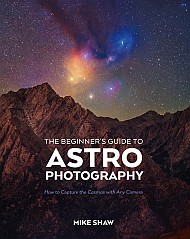Astronomy
Machine Learning is Surprisingly Good at Simulating the Universe
Some of the most powerful supercomputers in the world are designed to simulate complex astrophysical processes, like what's happening inside a giant star as it's going supernova. But researchers have developed a new machine learning algorithm that was able to accurately simulate galaxy evolution with fewer computer resources and dramatically more quickly than a supercomputer, which could take years to fully process.
If Dark Energy is Decreasing, is the Big Crunch Back on the Menu?
Astronomers once wondered if the Universe might one day collapse in on itself in a Big Crunch, but the discovery of dark energy suggested that the expansion of the Universe would accelerate, removing that possibility. New data from the Dark Energy Spectroscopic Instrument suggests that dark energy might be changing in strength over time, maybe even going negative. If that result holds, are we due for a Big Crunch? And how long would it take?
High-Speed Gas Clouds Fuel Star Formation in Depleted Galaxies
How do galaxies like ours continue producing stars long after they should have used up their star-forming gas. Somehow, an external gas source must find its way into the galaxy. New research has found evidence of gas clouds that found their way into a spiral galaxy, likely fueling continued star formation.
A Star Detonated as a Supernova... Twice
The beautiful supernova remnant looks a little different from other examples of stars that detonated in the past. And it should, because according to astronomers, the star that met its end exploded twice. It was a white dwarf in its former life, pulling material from a binary companion, creating the perfect conditions for a Type 1a supernova. It accumulated a blanket of helium, which exploded first, triggering a second detonation at the core of the star.
Peering Into a Starburst Galaxy With the JWST
Astronomers used the JWST to examine M82, a nearby starburst galaxy. M82 is forming stars at a prodigious rate due to its interactions with its neighbour, M81. It produces thousands of solar masses of stars per year, much more than the Milky Way.
Tianwen-2 Looks Back at the Earth
China's asteroid probe turned its cameras back towards the Earth and Moon, capturing an image of our home planet on May 30, 2025. The image was taken when the spacecraft was about 590,000 km away, speeding towards asteroid 2016HO3, where it will retrieve a sample and bring it back to Earth before carrying on to main-belt comet 311P. The spacecraft has been in flight for 33 days and is now over 12 million kilometers from Earth.
In the Search for Earth-like Worlds, We Should Probably Focus on Red Dwarfs
According to the latest studies led by Heidelberg University astronomers, low-mass stars quite often host Earth-like planets. Data collected as part of the CARMENES project were the basis of this finding. By analyzing the data, an international research team succeeded in identifying four new exoplanets and determining their properties.
Inbound: Astronomers Discover Third Interstellar Object
A newly discovered object may give astronomers an opportunity to study an interstellar visitor like never before. The object (A11pl3Z) is currently at +18th magnitude, moving slowly along the border of the constellations Serpens Cauda and Sagittarius, right near the galactic plane. The object was captured on July 2nd by the Deep Random Survey remote telescope in Chile. The Asteroid Terrestrial-impact Last Alert System (ATLAS) based in Rio Hurtado made the discovery on July 1st. Sam Deen soon backed this up with pre-discovery images from worldwide ATLAS sites in Chile, Hawaii and South Africa from June 25-29.
Weather Satellites Can Even Study the Weather Over on Venus
A pair of Japanese weather satellites took a break from monitoring Earth weather to sneak a peek at Planet Venus. Despite the fact that it's relatively tiny, and millions of kilometers away, they were able to detect changes in Venus' cloud-top temperatures and see patterns and structure in its upper atmosphere. There are long-term trends on Venus that these long-lasting satellites will be able to study, beyond the timeframe of a shorter mission.
Mercury Joins the 4th of July Fireworks Show
For folks in the United States, July evenings mean 4th of July fireworks. While you’re waiting for the show, be sure to watch for the most elusive of the planets as twilight falls, as Mercury shines at its very best for 2025. If you’ve never seen the innermost world before, now is a good time to try. This is because Mercury reaches greatest elongation, or its greatest point from the Sun as seen from our Earthly vantage point later this week.
US Air Force cancels plans to build Starship landing pads on island bird sanctuary
Best Amazon Prime Day star projector deals 2025
Forests' vanishing snow is also bad news for carbon storage
Forests' vanishing snow is also bad news for carbon storage
The Benefits of Raising Conscientious Kids
Being conscientious will serve kids in the long run. Here are some tips to help them learn that trait
Dark matter could turn 'failed stars' to the dark side, creating 'dark dwarfs'
Titan is the Perfect Benchmark for Studying Exoplanet Atmospheres
While we know of thousands of exoplanets, the science of studying their atmospheres is still in its early days. When astronomers analyze atmospheres, they have to decide which molecules to include in their models, which can bias the results. A new paper proposes that Cassini data on Titan could provide the perfect benchmark, helping to distinguish between different hydrocarbons detected in the atmosphere of an exoplanet.


